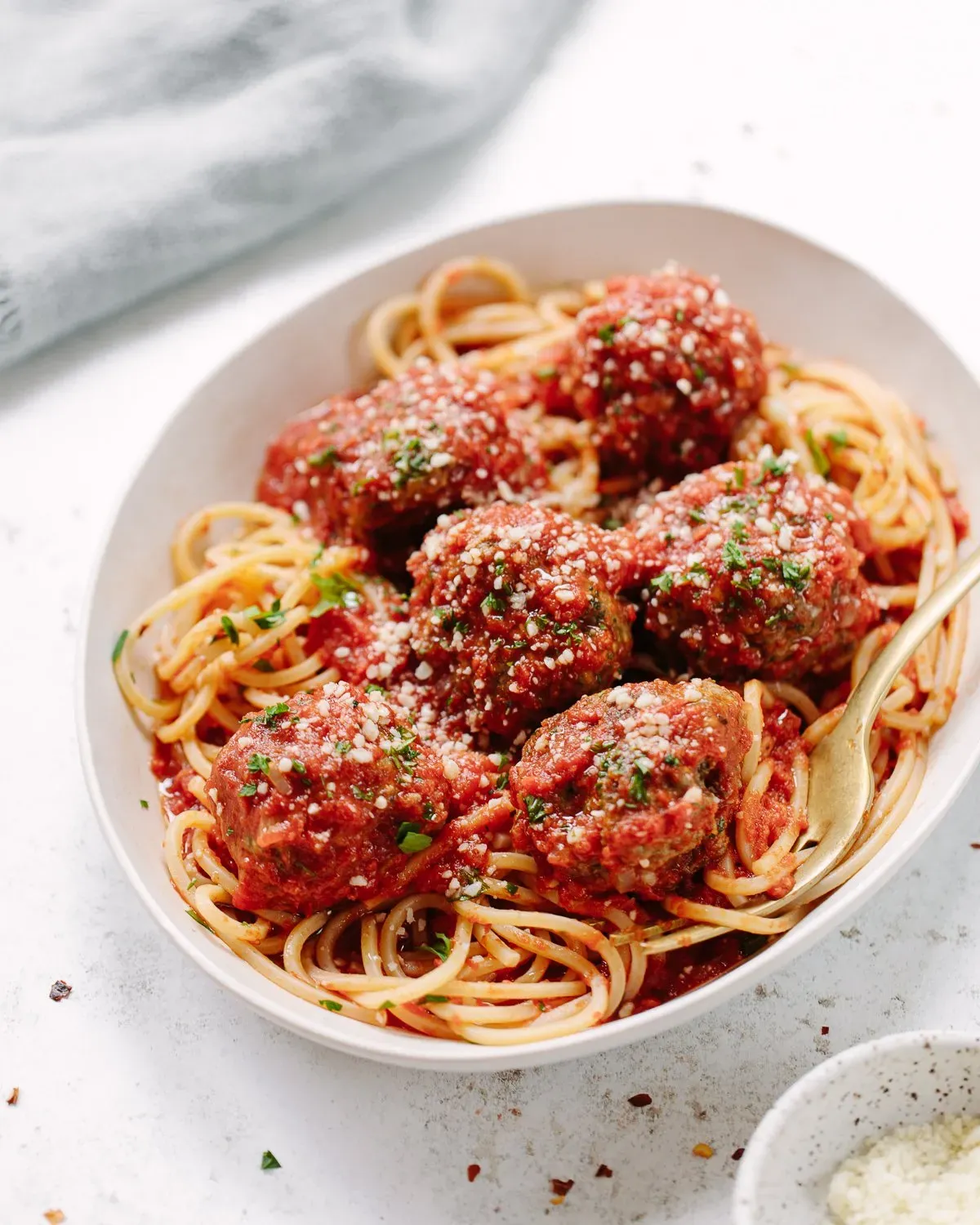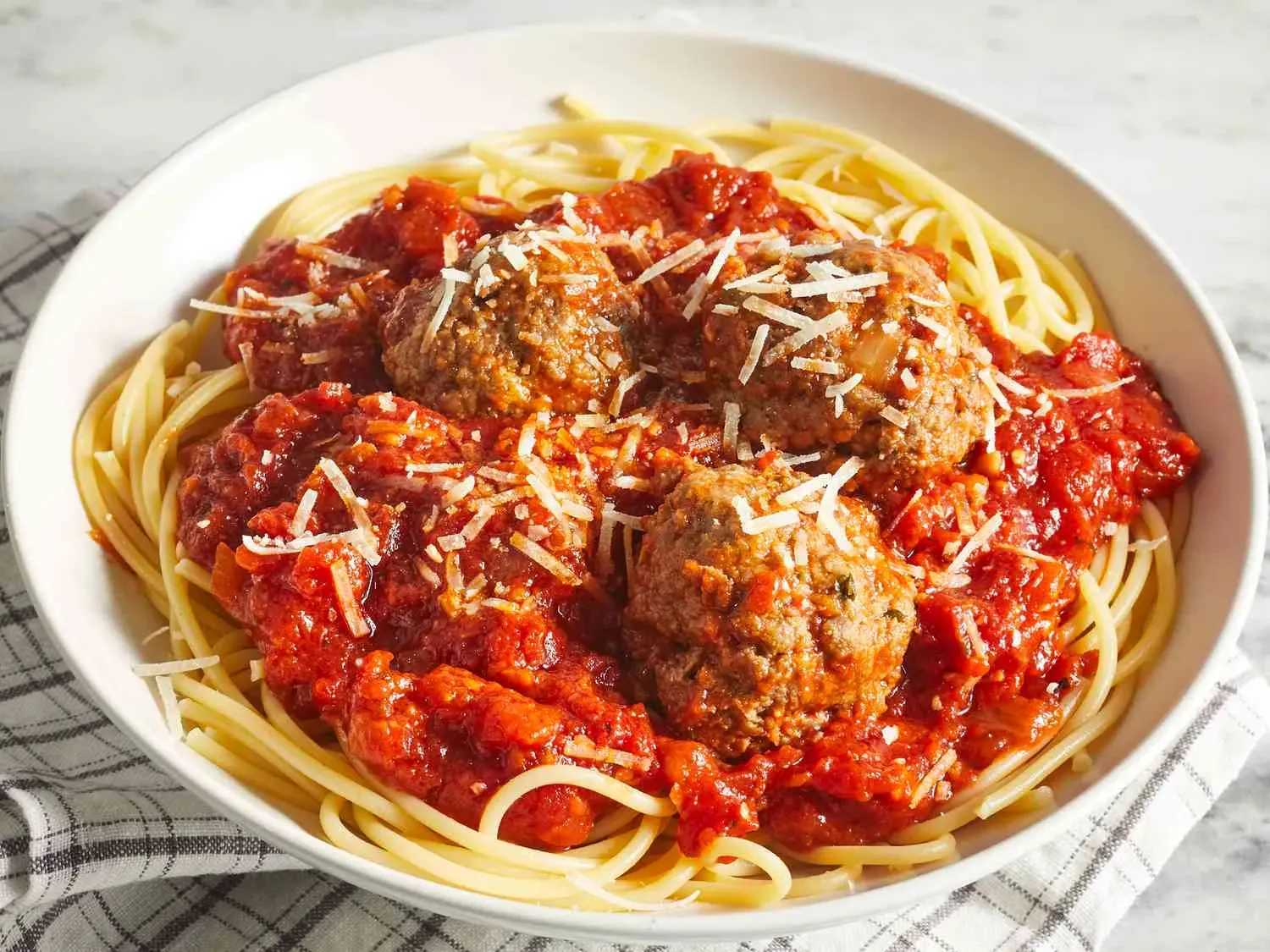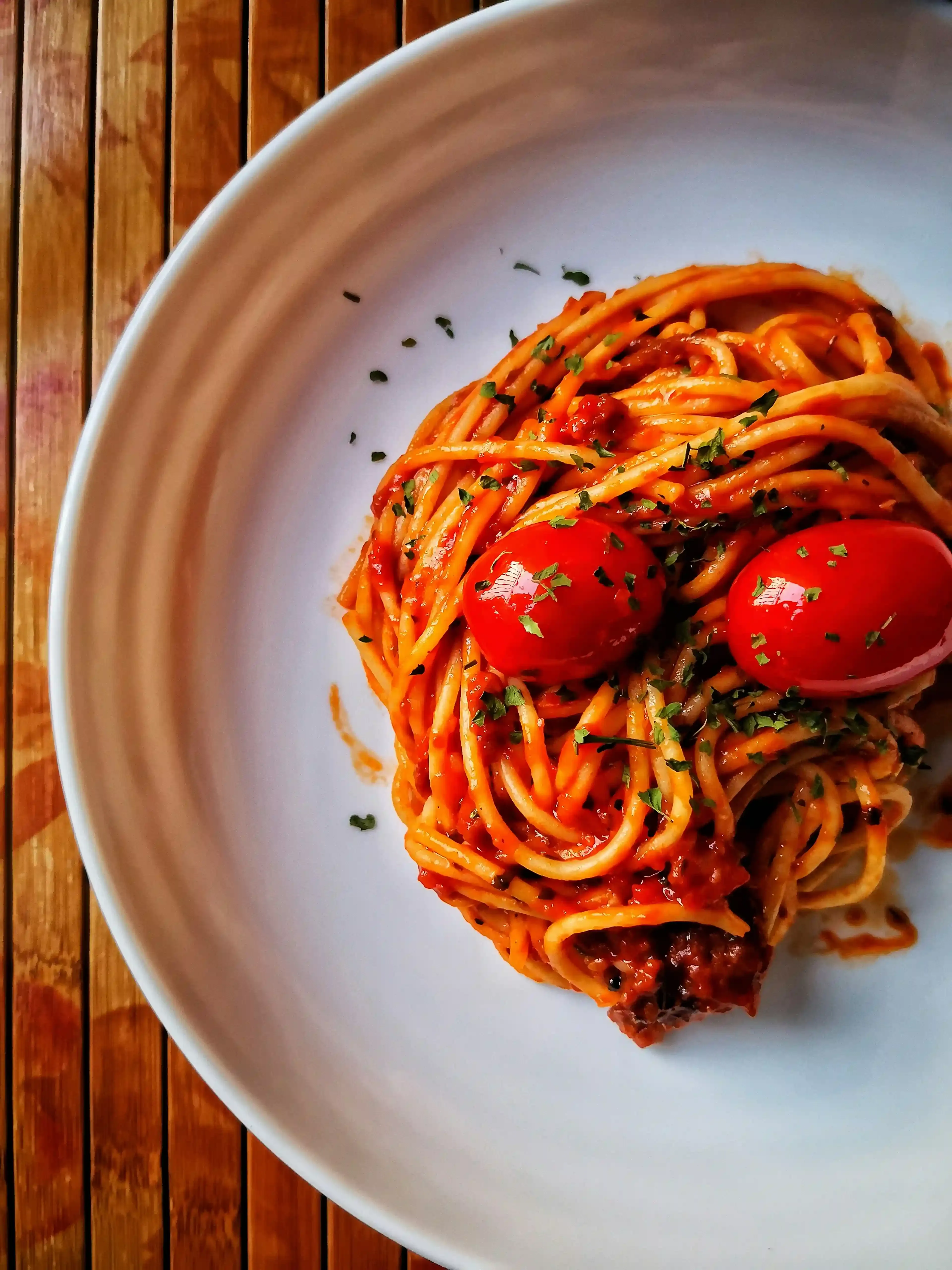Table of Contents
Ah,italian spaghetti and meatball recipes. It’s the comfort food champion, the dish that instantly transports you to a Sunday dinner, even if you’re just eating it on a Tuesday night from your couch. Plenty of folks grab a jar of sauce and frozen meatballs, and hey, no judgment here. Life gets busy. But if you've ever tasted the real deal – the kind where the sauce has simmered for hours and the meatballs are tender little clouds – you know there's a difference. A big one.
Why Homemade Italian Spaghetti and Meatball Recipes Taste Better

Why Homemade Italian Spaghetti and Meatball Recipes Taste Better
You Control the Good Stuff
Let's be real. When you buy pre-made sauce or frozen meatballs, you're getting whatever concoction the food scientists cooked up. That usually means high fructose corn syrup, weird preservatives you can't pronounce, and maybe a sad amount of actual tomato or meat. Making your ownitalian spaghetti and meatball recipesmeans you pick the ripe tomatoes, the fresh herbs, and the quality meat. You decide how much salt goes in, not some factory algorithm trying to hit a price point. It's the difference between a tailor-made suit and something off the rack – one just fits better and feels right.
Flavor Doesn't Happen Instantly
That deep, rich flavor you remember from grandma's sauce? It didn't come from a ten-minute simmer. It came from hours on the stove, low and slow, letting the tomatoes break down, the garlic mellow, and the herbs infuse everything. Store-bought stuff tries to fake this with flavor enhancers, but it never quite gets there. Homemade allows those simple ingredients to transform into something truly complex and satisfying. This slow cooking is a core reasonitalian spaghetti and meatball recipesshine when made at home.
Texture That Doesn't Lie
Ever bitten into a store-bought meatball that felt like a rubber ball or dry sawdust? Yeah, not fun. Achieving that perfect tender, juicy meatball comes down to the right mix of meat, binder (like breadcrumbs or soaked bread), and moisture, plus not overworking the mixture. When you make them yourself for youritalian spaghetti and meatball recipes, you can ensure they're packed loosely enough to stay tender and cooked just right. No mystery fillers, just good meatball goodness.
Crafting Juicy Meatballs for Your Italian Spaghetti

Crafting Juicy Meatballs for Your Italian Spaghetti
Choosing the Right Meat Matters
Forget those pre-packaged logs of extra-lean ground beef. For truly juicy meatballs in youritalian spaghetti and meatball recipes, you need fat. Seriously. Fat renders as the meatballs cook, keeping them moist from the inside out. A blend of ground beef (like 80/20) is a solid start, but mixing in some ground pork or veal adds layers of flavor and contributes to that tender texture. Think of it as building a flavor foundation, not just grabbing whatever's cheapest. Quality ingredients, even the meat blend, make a noticeable difference in the final bite.
The Binder's Not Just Glue
so you've got your meat blend. Now comes the binder – usually breadcrumbs or bread soaked in milk. This isn't just to hold things together; it's crucial for moisture. Stale bread soaked in milk is often superior to dry breadcrumbs because it adds more moisture directly into the mix and results in a softer meatball. You also need eggs to help bind, but don't go crazy. Too much binder or egg makes for tough, dense meatballs. The goal is a mixture that's just wet enough to hold its shape without being sticky or requiring you to pack it like you're building a sandcastle.
- Use 80/20 ground beef, or a mix with pork or veal.
- Soak stale bread in milk instead of using dry breadcrumbs.
- Don't overmix the meatball mixture; handle it gently.
- Form meatballs loosely, don't pack them too tightly.
- Cook them gently, either baked or simmered directly in the sauce.
Slow Simmering the Sauce: The Soul of Italian Spaghetti and Meatball Recipes

Slow Simmering the Sauce: The Soul of Italian Spaghetti and Meatball Recipes
Why Time is Your Secret Ingredient
you've got your beautiful, soon-to-be-juicy meatballs ready. Now, let's talk sauce. This isn't just some red liquid you pour over pasta. This is where the magic happens, the part that elevates simpleitalian spaghetti and meatball recipesinto something truly memorable. And the secret? Time. A quick twenty-minute simmer just won't cut it. You need to let those flavors meld, deepen, and concentrate. It's like letting musicians rehearse; the longer they play together, the better they sound. Tomatoes, herbs, garlic – they need hours over low heat to truly become friends and create that rich, complex base.
Building the Flavor Foundation
Every great sauce starts somewhere, and for classicitalian spaghetti and meatball recipes, that usually means a soffritto. This is just a fancy Italian word for sautéed aromatics – typically onion and garlic, maybe some celery and carrot depending on who taught you. You cook these slowly in olive oil until they're soft and sweet, not browned and bitter. This step is non-negotiable. It builds the fundamental flavor layer that everything else sits on. Skimp here, and your sauce will taste flat, no matter how long you simmer it. It's the difference between a strong foundation and building on sand.
- Start with good quality olive oil.
- Finely chop onion and garlic (celery/carrot optional).
- Cook aromatics over low heat until soft and translucent, not browned.
- Use crushed or whole peeled San Marzano tomatoes for the best flavor.
- Add a bay leaf and maybe a pinch of sugar to balance acidity.
Letting It Bubble and Transform
Once your aromatics are sorted, it's time for the tomatoes. Crushed or whole peeled (which you then break up in the pot) are usually better than purée for a sauce that simmers for a long time; they have a fresher flavor. Add them to the pot with a bay leaf, maybe a pinch of sugar if your tomatoes are acidic, and some salt and pepper. Bring it to a gentle simmer, then turn the heat way down. This is where the waiting game begins. Put a lid on, slightly ajar to let steam escape, and let it bubble gently for at least 90 minutes, ideally longer. Stir occasionally to prevent sticking. This slow reduction concentrates the tomato flavor and thickens the sauce naturally. Your kitchen will smell amazing, which is a bonus.
Serving and Storing Your Italian Spaghetti and Meatballs

Serving and Storing Your Italian Spaghetti and Meatballs
Bringing it All Together: The Grand Finale
You've put in the time. The sauce has simmered into a rich, glossy dream, and your meatballs are resting, plump and ready. Now comes the moment of truth: serving youritalian spaghetti and meatball recipes. Don't just dump sauce on top of a pile of dry pasta. Cook your spaghetti al dente – it should still have a little bite. While the pasta drains, toss it directly into the pot with the sauce. Give it a good mix so every strand is coated in that deliciousness. This isn't just for looks; it helps the sauce cling to the pasta better. Then, gently nestle those beautiful meatballs on top or mix them in if you prefer. A sprinkle of fresh grated Parmesan and some torn basil leaves are non-negotiable finishing touches. It makes the dish look as good as it tastes.
Leftovers? The Gift That Keeps Giving
One of the best things about making a big batch ofitalian spaghetti and meatball recipesis the leftovers. Seriously, sometimes it tastes even better the next day after the flavors have had more time to mingle. Let everything cool completely before packing it up. Store the sauce and meatballs together in an airtight container in the fridge. The pasta is best stored separately if you can, otherwise, it can get a bit soft or sticky mixed with the sauce for days. Reheat gently on the stovetop, adding a splash of water or broth if needed to loosen the sauce. Avoid nuking it in the microwave unless you enjoy unevenly heated food and rubbery meatballs. Trust me, a little care during reheating makes all the difference.
- Cool completely before storing.
- Store sauce/meatballs together in an airtight container.
- Keep cooked pasta separate if possible.
- Refrigerate for up to 3-4 days.
- Freeze leftovers (sauce and meatballs) for up to 3 months.
- Thaw frozen leftovers in the fridge overnight.
- Reheat gently on the stovetop.
Bringing It All Together
So there you have it. Makingitalian spaghetti and meatball recipesfrom scratch takes a bit more time than popping open a jar, sure. You chop the onions, you mix the meat, you wait for that sauce to do its thing. But the payoff? A dish that actually tastes like something, with depth and character, not just salt and sadness. It’s the difference between fast food and a meal you actually remember eating. Give it a shot. Worst case, you learn you really appreciate that jarred stuff more. More likely, you'll wonder why you didn't do this sooner.